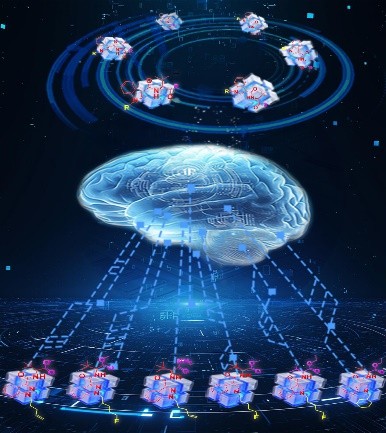
Synthetic cannabinoids, a class of new psychoactive substances, have emerged as a significant public health and social stability threat due to their structural diversity, rapid iteration, and stronger excitatory effects compared to traditional drugs. Their low chemical reactivity and subtle structural variations also make on-site detection and differentiation via covalent reactions extremely challenging.
To address this issue, researchers from the Xinjiang Technical Institute of Physics and Chemistry (XTIPC) of the Chinese Academy of Sciences have developed a novel method combining Raman spectroscopy with deep learning algorithms. This approach enables accurate differentiation and identification of CA series synthetic cannabinoids—characterized by amide groups as head groups—despite their highly similar molecular structures.
Raman spectroscopy, valued in trace substance detection for its ability to provide molecular "fingerprints," struggles with structurally similar compounds, as their Raman spectra are often too alike to distinguish visually. The research team tackled this limitation by developing a convolutional neural network (CNN) algorithm integrated with an attention mechanism module, achieving precise differentiation of CA series synthetic cannabinoids.
The process involved initial processing of Raman spectral data using three CNN models: VGG16, DenseNet121, and ResNet34. However, these models yielded suboptimal accuracy. By incorporating the SENet (Squeeze-and-Excitation Network) attention mechanism module into ResNet34, the team elevated the classification accuracy to 100%, enabling precise discrimination of six synthetic cannabinoids.
Furthermore, the researchers employed an attribution algorithm to identify the most discriminative Raman spectral bands used by the SE_ResNet34 model during classification. This analysis systematically revealed how the algorithm distinguishes between multiple targets based on subtle spectral differences, offering insights into the internal logic behind the model's accurate classification—a key step toward understanding deep learning-driven analytical processes.
The SE_ResNet34 model also demonstrated generalization capabilities. Tests confirmed its 100% classification accuracy remains unaffected by variations in target concentration, the presence of structural analogs, or interference from other common drugs.
This work provides a paradigm for applying advanced deep learning-assisted Raman spectroscopy in substance identification, enhancing understanding of Raman spectral information at the sub-molecular level, and fostering interdisciplinary research.
The study was published in Analytical Chemistryand supported by the National Natural Science Foundation of China, the Tianshan Innovation Team, and other funding sources.

Raman Spectroscopy Coupled with Deep Learning Algorithms for the Precise Differentiation and Identification of Structurally Similar Synthetic Cannabinoids (Image by the XTIPC)

86-10-68597521 (day)
86-10-68597289 (night)

52 Sanlihe Rd., Xicheng District,
Beijing, China (100864)

